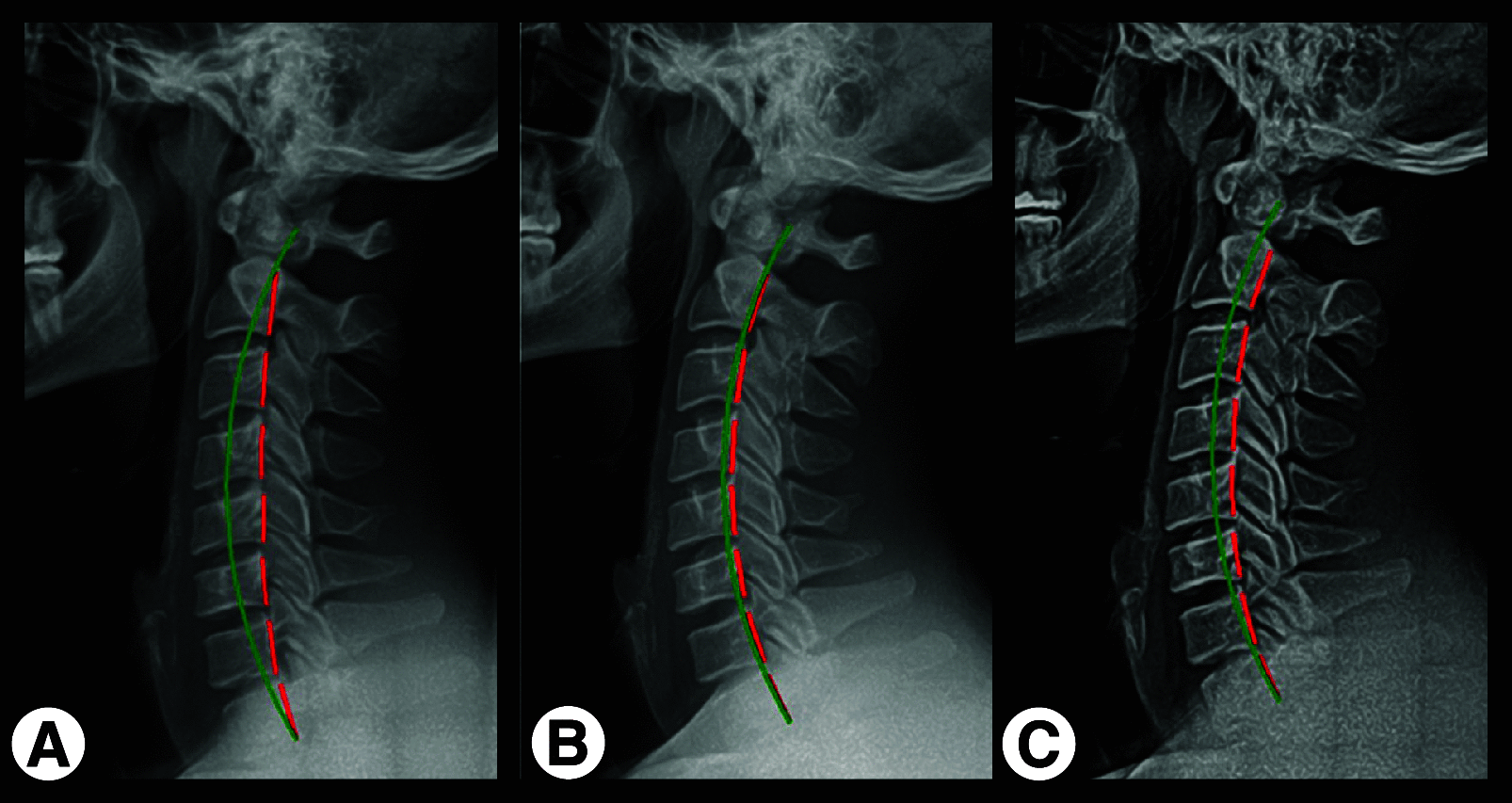Post-concussion syndrome and concussion incidence improved in a pro rugby player following cervical spine rehab: case study and 6-year follow-up
- PMID: 37691851
- PMCID: PMC10485734
- DOI: 10.2217/cnc-2023-0004
Post-concussion syndrome and concussion incidence improved in a pro rugby player following cervical spine rehab: case study and 6-year follow-up
Abstract
Aim: To report improvements in post-concussion syndrome and concussion incidence following cervical spinal alignment correction.
Case presentation: A 27-year-old professional rugby player with 20 documented concussions presented with abnormal cervical spinal alignment and post-concussion syndrome. After 30 sessions of cervical rehabilitation, health outcomes improved. Post-treatment radiographs showed improved cervical lordosis from -13.5° to -37.4° (ideal is -42°) and right head translation from -22.7 to -11.3 mm (ideal is 0 mm). 2-year follow-up radiographs and 6-year follow-up health outcomes showed post-treatment improvements were maintained. The patient reported two documented concussions in the 6 years following treatment while maintaining the same lifestyle and professional rugby career.
Conclusion: Correction of abnormal cervical spinal alignment may help athletes with post-concussion syndrome and reduce risk of concussion.
Keywords: Chiropractic BioPhysics®; cervical lordosis; cervical spine alignment; cervical spine rehabilitation; concussion; coronal spinal posture; post-concussion syndrome; sagittal spinal posture; spine biomechanics; traumatic brain injury.
Plain language summary
A 27-year-old male professional rugby player with a 6-year history of 20 documented concussions presented with severe neck and headache pain and disability. X-rays of his neck were taken to measure spinal alignment and posture. Also, neck and headache pain, disability and quality-of-life measures were assessed. After 30 treatment sessions of Chiropractic BioPhysics® (CBP®) neck spinal alignment and posture rehabilitation, neck and headache pain and disability and quality-of-life improved. X-rays showed improved spinal alignment and posture in his neck. Follow-up x-rays 2 years after treatment showed that the improvements to his neck spinal alignment and posture were maintained. Follow-up assessment 6 years after treatment showed that the post-treatment improvements in in neck and headache pain and disability and quality of life were maintained. Additionally, the patient reported only two documented concussions in the 6 years following treatment maintaining the same lifestyle and competing as a professional rugby player at the same level, position and playing time. This is the first documented improvement in post-concussion syndrome and decreased concussion occurrence following correction of neck spinal alignment and posture. Correction of neck spinal alignment and posture allows the spine to function as a healthy shock absorber and increases its ability to decrease stress transferred to the brain from trauma responsible for concussions and may reduce the risk of concussions.
© 2023 The Authors.
Conflict of interest statement
The other authors declare no conflicts of interest.
Figures
References
-
- Strauss S, Lightstone D, Fedorchuk C. Improvement in post-concussion symptoms/disabilities and concussion frequency in a rugby player following cervical spine correction. J. Cereb. Blood Flow Metab. 42(Suppl. 1), 110–111 (2022).
-
- Silverberg ND, Iaccarino MA, Panenka WJ et al.; American Congress of Rehabilitation Medicine Brain Injury Interdisciplinary Special Interest Group Mild TBI Task Force. Management of concussion and mild traumatic brain injury: a synthesis of practice guidelines. Arch. Phys. Med. Rehabil. 101(2), 382–393 (2020). - PubMed
-
- Kim K, Priefer R. Evaluation of current post-concussion protocols. Biomed. Pharmacother. 129, 110406 (2020). - PubMed
Publication types
LinkOut - more resources
Full Text Sources


